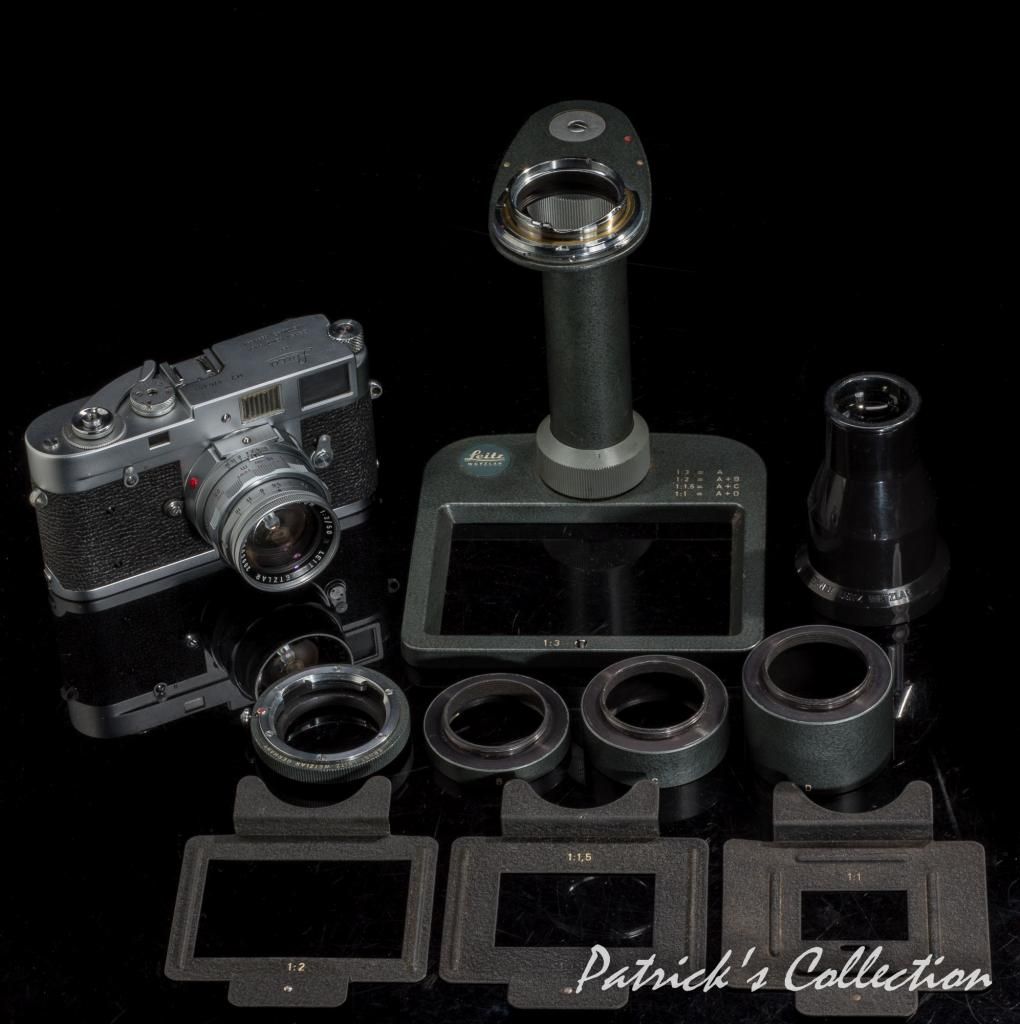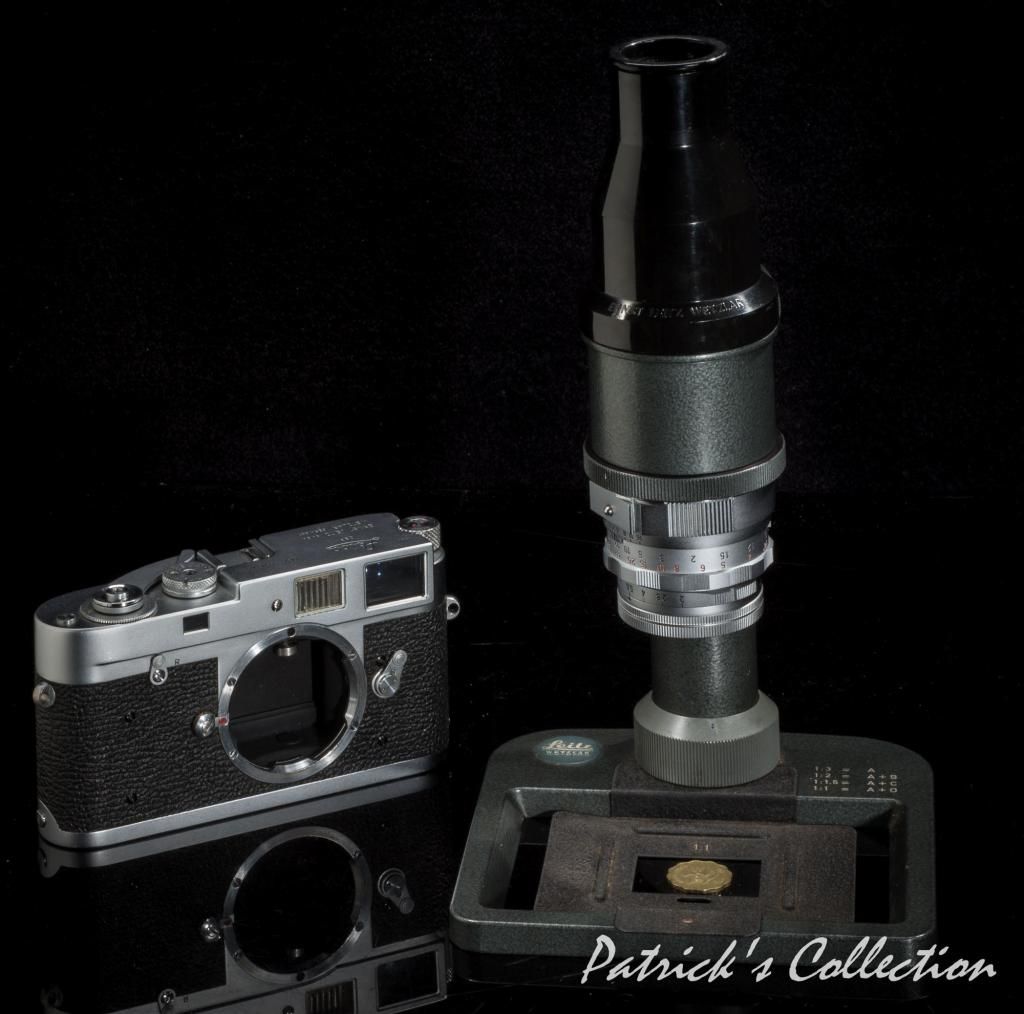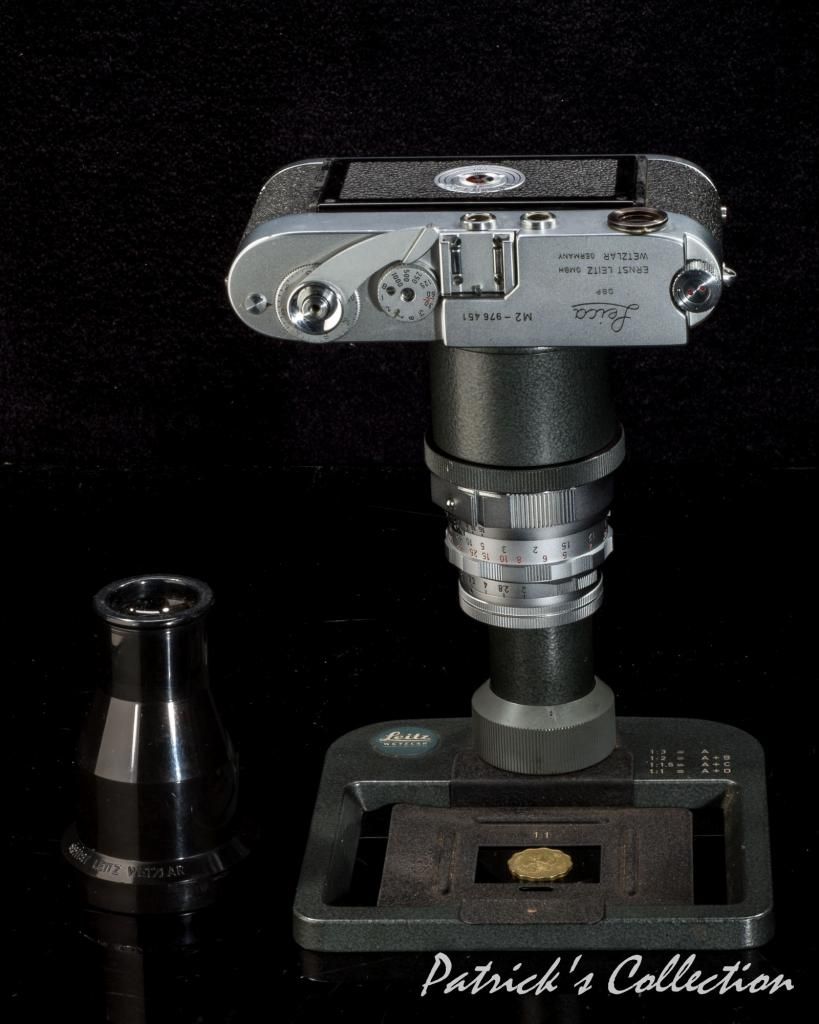znapper
Well-known
Hi
Funny question:
Bought a couple of Zorkis (1d and 4K) from Russia and Ukraine.
Both came with Industar f3.5 50mm lenses (one pancake and one "regular").
A few days ago, I bought a couple of Jupiter-8 lenses and one of the lenses came with extension-rings/tubes.
In fact, the tubes, all stacked up, are twice the length of the Jupiter lens

Now, I wonder.
How can one use these extension-rings?
I am very aware of the parallax-issue and that it becomes more and more of a problem, the closer you photograph.
So, what is the point of having extension-tubes, at all, on a rangefinder, since you can't even see the thing you shoot when really close up?
- How do you shoot macro on a rangefinder?
- Is there any way to use a single extension-ring, to obtain a slightly closer focusing distance (not macro), lets say for close-up headshots, and still be able to focus correctly...how?
I really didn't buy the extension-rings, I was after the Jupiter-lens, but as long as I have them, it would be interesting to see if they could be used for something. ^^
Funny question:
Bought a couple of Zorkis (1d and 4K) from Russia and Ukraine.
Both came with Industar f3.5 50mm lenses (one pancake and one "regular").
A few days ago, I bought a couple of Jupiter-8 lenses and one of the lenses came with extension-rings/tubes.
In fact, the tubes, all stacked up, are twice the length of the Jupiter lens
Now, I wonder.
How can one use these extension-rings?
I am very aware of the parallax-issue and that it becomes more and more of a problem, the closer you photograph.
So, what is the point of having extension-tubes, at all, on a rangefinder, since you can't even see the thing you shoot when really close up?
- How do you shoot macro on a rangefinder?
- Is there any way to use a single extension-ring, to obtain a slightly closer focusing distance (not macro), lets say for close-up headshots, and still be able to focus correctly...how?
I really didn't buy the extension-rings, I was after the Jupiter-lens, but as long as I have them, it would be interesting to see if they could be used for something. ^^
nobbylon
Veteran
The M240 makes it easy with live view and a 16469 oufro adapter or use a visolex. I cant see the point if its not either of the above as it would be a pain.
AndersG
Well-known
Are all the lenses LTM lenses, no FSU M39 SLR lenses mixed in? (The latter would lack range finder coupling.) My first guess would be that the extension tubes are really FSU M39 items as using extension tubes with a FED or Zorki RF would seem extremely inconvenient (though, what could you do when there were no SLRs available...).
JMQ
Well-known
Visoflex. It works, but it's pretty bulky and heavy.
Ko.Fe.
Lenses 35/21 Gears 46/20
These days lens like this with extension rings is cheap but neat and small alternative for macro lens on mirrorless. I read somewhere what it could be also used on enlarger.
In Soviet time it was printed chart for tubes focusing distances and external framing frame for RF cameras.
Those rings are more common on M39 Soviet SLRs.
In Soviet time it was printed chart for tubes focusing distances and external framing frame for RF cameras.
Those rings are more common on M39 Soviet SLRs.
znapper
Well-known
Are all the lenses LTM lenses, no FSU M39 SLR lenses mixed in? (The latter would lack range finder coupling.) My first guess would be that the extension tubes are really FSU M39 items as using extension tubes with a FED or Zorki RF would seem extremely inconvenient (though, what could you do when there were no SLRs available...).
Indeed, the extension-rings themselves does not have their own coupling to push onto a RF-arm at all, they are simply just "dead" tubes that you can stack on LTM cameras.
The Jupiter does indeed have the regular coupling that you would expect, but I suppose it would have no impact on the tubes when you focus ^^
So, I suppose the lens + tubes weren't really meant for RF-cameras at all
Good to know, I was rather puzzled over here, I am not too familiar with RF-cameras in general (having only a Leica CL, before buying the zorki's), or LTM systems.
I'll hold onto them, who knows, I may just stumble over some kind of SLR or even a digital system, who are mentioned by others here, at a later date. =)
rbiemer
Unabashed Amateur
I have a set of these that came with instructions for use( in Russian). The set I have was clearly meant for use on a RF camera and the illustration show a 50mm RF lens--one of the collapsable Industars. I should still have a scan of the pages I could email if any one wants it.
I do use the rings fairly often; they are the easiest way to vary the "focal" length when I'm shooting pinhole with my RF cameras.
Rob
I do use the rings fairly often; they are the easiest way to vary the "focal" length when I'm shooting pinhole with my RF cameras.
Rob
Dwig
Well-known
Visoflex. It works, but it's pretty bulky and heavy.
+1, either with a Visoflex housing or with a Focaslide.
E. Leitz New York (ELNY) made and sold a set "back in the day". I have a set of these along with a Focaslide with the IIIg/IIg modification to the alignment tab that takes the higher top cover around their rewind knobs into account.
pvdhaar
Peter
Some macro extension tubes for non-reflex cameras came with wire frames. This wire frame both marked off the framed area, and sat the appropriate distance in front of the lens so that if you put it up against a sheet of paper, the text would be correctly focused..
rbiemer
Unabashed Amateur
Here are the instructions that came with my set.
In the drawing for these the distance measurement seems to be from the back edge of the camera. Which means, I think, that the set was made for a specific camera--maybe a FED3 based on the line drawing? The camera may be specifically mentioned in the instructions but I can't read Russian so I don't know.
I thought I had a phot of how I actually use mine: I use them as a spacer between the pinhole lens I have for ltm and the camera to give me some choice of field of view, with the set I can go from about 28mm to just a bit over 90.
And, the scans are as good as I could make them--the paper is very thin and the ink used to print them bled through quite a lot.
If any one wants/needs bigger versions of these here is the album I have the instructions in:
https://plus.google.com/u/0/photos/101417185126711568596/albums/5292446789464443521?authkey=CLC8xaDh7cuaDw
Rob


In the drawing for these the distance measurement seems to be from the back edge of the camera. Which means, I think, that the set was made for a specific camera--maybe a FED3 based on the line drawing? The camera may be specifically mentioned in the instructions but I can't read Russian so I don't know.
I thought I had a phot of how I actually use mine: I use them as a spacer between the pinhole lens I have for ltm and the camera to give me some choice of field of view, with the set I can go from about 28mm to just a bit over 90.
And, the scans are as good as I could make them--the paper is very thin and the ink used to print them bled through quite a lot.
If any one wants/needs bigger versions of these here is the album I have the instructions in:
https://plus.google.com/u/0/photos/101417185126711568596/albums/5292446789464443521?authkey=CLC8xaDh7cuaDw
Rob


Dwig
Well-known
Here are the instructions that came with my set.
In the drawing for these the distance measurement seems to be from the back edge of the camera. Which means, I think, that the set was made for a specific camera--maybe a FED3 based on the line drawing? ...
While this may well be the case with this example, that is not the standard way of creating these charts.
The proper way to spec charts of this type is to use subject to film plane dimensions. Most of the "better" camera models will have a reference mark on the body to indicate the film plane. With some is is a circle with a line through it parallel to the film plane. Other "brand standard" references were used such as top of the serial numbers.
rbiemer
Unabashed Amateur
Certainly true!
I don't recall ever having seen the film plane marked on any of the FSU cameras I have owned.
I wonder if instructions were written (and distances calculated) for what ever specific cameras these were made for?
Based on the blank spaces in the form at the bottom of the page with the drawing, I guess that my set of rings were made sometime in the 1980's? So, I think my guess about FED3 is likely wrong. Maybe FED 4 or 5?
Rob
I don't recall ever having seen the film plane marked on any of the FSU cameras I have owned.
I wonder if instructions were written (and distances calculated) for what ever specific cameras these were made for?
Based on the blank spaces in the form at the bottom of the page with the drawing, I guess that my set of rings were made sometime in the 1980's? So, I think my guess about FED3 is likely wrong. Maybe FED 4 or 5?
Rob
While this may well be the case with this example, that is not the standard way of creating these charts.
The proper way to spec charts of this type is to use subject to film plane dimensions. Most of the "better" camera models will have a reference mark on the body to indicate the film plane. With some is is a circle with a line through it parallel to the film plane. Other "brand standard" references were used such as top of the serial numbers.
David Hughes
David Hughes
Hi,
My immediate reaction was that they were for the Zenit SLR but, thinking of the Leitz BELUN etc it is possible to use them. The BELUN was a 1930's design and no film plane mark exists on my 30's Leicas. The real problem will be with the exposure but I guess there will be instructions for it and the focussing somewhere on the web.
FWIW, I've only ever seen a 50mm ext'n tube for a Leica and that was the one with the BELUN.
Regards, David
My immediate reaction was that they were for the Zenit SLR but, thinking of the Leitz BELUN etc it is possible to use them. The BELUN was a 1930's design and no film plane mark exists on my 30's Leicas. The real problem will be with the exposure but I guess there will be instructions for it and the focussing somewhere on the web.
FWIW, I've only ever seen a 50mm ext'n tube for a Leica and that was the one with the BELUN.
Regards, David
amoebahydra
Established
I am using Leica BEOON closeup stage set for my Leica rangefinders

The set have a focusing stage with 4 extension rings that can be used in combination giving magnification 1:3 to 1:1 when using a 50 mm lense. The object is first focused with the help of an focusing unit with ground glass and then the camera body will replace the focusing unit for final photo taking.



The set have a focusing stage with 4 extension rings that can be used in combination giving magnification 1:3 to 1:1 when using a 50 mm lense. The object is first focused with the help of an focusing unit with ground glass and then the camera body will replace the focusing unit for final photo taking.


amoebahydra
Established
Share:
-
This site uses cookies to help personalise content, tailor your experience and to keep you logged in if you register.
By continuing to use this site, you are consenting to our use of cookies.


